Why are we sampling?
Intertidal communities are exposed to both air and water temperatures as tides flow in and out. As such, temperature is a strong driver of intertidal community structure (species composition and abundance; see Intertidal Communities) and can vary from very warm to below freezing in high latitudes. Temperature also can vary significantly on short (daily), seasonal, and longer-term time scales. Currently, we are experiencing more heat wave events but also a general warming due to anthropogenic causes. We monitor intertidal water and air temperatures continuously throughout the year at all sites in each region so that we can evaluate effects of varying temperature on intertidal community structure and trends in abundance of species of interest.
Where are we sampling?
We measure intertidal temperature at the same sites where intertidal communities are monitored in western Prince William Sound (WPWS), Kenai Fjords National Park (KEFJ), Kachemak Bay (KBAY), and Katmai National Park and Preserve (KATM). Data-logging temperature recording devices (HOBOs, see below) are deployed at 2 tidal heights: 0.5m above mean lower low water (MLLW) and 1.5 m above MLLW (low and mid-intertidal zones, respectively).
How are we sampling?
Temperature is measured using HOBO data loggers that record temperature several times per hour every day for the entire year. Because these instruments are deployed in intertidal areas, they record water temperature when the tide is in and air temperature when the tide drops below the level of the data logger. We retrieve and download the instruments every year to continuously track temperature at each site.

THE UNASSUMING PIECE OF GRAY PVC PIPE HOUSES A DATA LOGGER THAT RECORDS AIR AND WATER TEMPERATURES THROUGH THE YEAR. PHOTO CREDIT: DAN MONSON, USGS.
What are we finding?
Nearshore water temperature trends in all four intertidal zones show warming beginning in 2014 and persisting to 2016, corresponding to the large marine heatwave phenomenon (originally termed “the Blob”) detected by offshore measurements (see Environmental Drivers). While temperatures appeared to cool and return to normal across all regions in late 2017 and 2018, 2019 indicated warmer than average water temperatures in the intertidal zone across all four study regions and a cooling during the early part of 2020, particularly in the western blocks of Kachemak Bay and Katmai. Temperatures appeared to return to the long-term average across all regions early in 2021, followed by cooling across all regions into the summer months of 2021. In 2024, at the time of collection (mid-summer), all four regions remain cooler than the average through the data record, though somewhat warmer than 2007-2014. Our data confirm that the physical manifestations of these large-scale oceanographic fluctuations were expressed in nearshore ecosystems.

Seasonal intertidal water temperature anomalies at the 0.5 m tide level four regions of the western Gulf of Alaska (west of 144°W), western Prince William Sound (WPWS; 2011-2024), Kenai Fjords National Park (KEFJ; 2008-2024), Kachemak Bay (KBAY; 2013-2024), and Katmai National Park adjacent to Shelikof Strait (KATM; 2006-2024).



